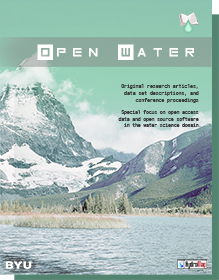Keywords
ECMWF, GEOGloWS, Streamflow Forecasts, Hydrologic-Modelling-as-a-Service, Hydroviewer
Abstract
Earth observation data are increasingly ubiquitous, easily accessible, often freely available, and more usable due to improvements in software, data standards, network infrastructure, and national policies. As a result, greater opportunities arise for using these data in emerging fields such as decision support for local and regional environmental and water resources management. In parts of the world where in situ data are less readily available, global Earth observation data, used in decision support tools, can be a boon to government and other water management agencies. The Group on Earth Observations Global Water Sustainability Initiative (GEOGloWS) works to bring global water management capabilities to local decision-makers. Recently, the European Centre for Medium-Range Weather Forecasts (ECMWF) developed and deployed a global hydrologic modeling system that generates historical simulations and daily ensemble forecasts. This data set is highly informative and potentially transformative for users at local scales as it provides access to local forecast data without requiring the expertise or infrastructure to develop and run predictive models. The ECMWF forecast uses Earth observations, hydrologic modeling, and streamflow routing to forecast flows for every river of the world. However, for these data to be most valuable at local levels, the model data and visualization services ideally should be subsetted to a regional or local scale and presented in a local geographic context. Subsetting this dataset allows for customized data access to support local water management challenges. This paper presents the design, development, and testing of the GEOGloWS Hydroviewer, which is an open source, web-based software that accesses and localizes the global ECMWF forecast services. It can localize these data by subsetting the mapping and modeling services. The resulting data and Hydroviewer app are designed to be a “light-weight” and portable software which supports further customizations. This allows individual water management agencies to automatically generate customized views and uses for specific needs and capabilities without reliance on external software. This web-based distribution and data storage removes many of the typical interdependent relationships that often hinder technology transfer to developing countries.
BYU ScholarsArchive Citation
Ashby, Kyler R.; Hales, Riley Chad; Nelson, Jim; Ames, Daniel P.; and Williams, Gustavious P.
(2021)
"Hydroviewer: A Web Application to Localize Global Hydrologic Forecasts,"
Open Water Journal: Vol. 7:
Iss.
1, Article 9.
Available at:
https://scholarsarchive.byu.edu/openwater/vol7/iss1/9
